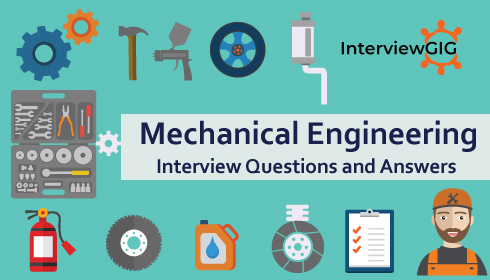What is 2-Stroke Engine?
In simple words: It has one power stroke for each revolution of the crankshaft.
2 Stroke Engine is a type of Internal combustion engine where one power cycle is completed with two strokes of the piston during only one rotation of crankshaft. In a 2-stroke engine, all five functions of the cycle are completed in only two strokes of the piston (or one revolution of the crankshaft). (Here, Cycle of five functions are intake, compression, ignition, combustion and exhaust.)
What is 4-Stroke Engine?
In simple words: It has one power stroke for every two revolutions of the crankshaft.
In a 4-Stroke Engine, the piston completes 2-strokes during each revolution: one compression stroke and one exhaust stroke, each being followed by a return stroke. The spark plugs fire only once every other revolution, and power is produced every 4-strokes of the piston. These engines also do not require pre-mixing of fuel and oil, as they have a separate compartment for the oil.
What kind of oil does a 2-stroke engine use?
2T engine oil is a semi-synthetic low smoke engine oil that meets the critical requirements of 2-stroke engines.
Which one is better 4-stroke or 2-stroke?
4-stroke engine is better than Two stroke engine because fuel consumption, performance, losses (thermal, mechanical friction).
What do you know about Powertrain?
Powertrain is a most important component sector in automobile industry for development. The powertrain, also known as torque train. It starts to form the engine and ends at the wheels passing through the bell housing, transmission, driveshaft, and differential. It is a system of mechanical parts in a vehicle that takes the power, or output, of the engine and, through specific gear ratios, slows it and transmits it as torque.
What is Coolant?
Coolant, also known as cutting fluid. It is a type of lubricant that aids a CNC machine to easily cut materials such as metals, fiberglass, and high-density plastics among others.
How will you find cracks in the long shaft?
A shaft crack is a slowly growing fracture of the rotor. If undetected in an operating machine, as a crack grows, the reduced cross section of the rotor will not able to withstand the dynamic loads applied to it. When this happens, the rotor will fail in a fast brittle fracture mode.
What is heat exchanger?
Heat exchanger is used to transfer heat between two fluids. When a fluid is used to transfer heat, the fluid could be a liquid, such as water or oil, or could be moving air.
What is hardest Material?
Can you explain Working of car Engine?
In short words, an engine takes the fuel you pump into it and converts it into energy which powers your car. Or Specifically, an internal-combustion engine is a heat engine in that it converts energy from the heat of burning gasoline into mechanical work, or torque. That torque is applied to the wheels to make the car move.
What happens if I put diesel into petrol engine?
Diesel is less volatile and has low self-ignition temperature which is about 210°C. So, the engine will not work only. The vehicle will misfire and produce smoke. The engine will cut out after the petrol in the fuel lines has been used up, and your car might fail to start again.
What happens if I put petrol into diesel engine?
Putting petrol in a diesel engine can cause more damage than putting diesel in a petrol. If you’ve put petrol into your diesel engine, that causes increased friction in a diesel engine, which works differently to a petrol one. The more petrol that gets pumped through an oil-burner, the more severe the damage will be.
What is Reciprocating compressors?
Reciprocating compressors generate pulses of compressed air or gas that are discharged into the piping that transports the air or gas to its point(s) of use.
Can you explain common rail injection system?
Common rail injection system is one of the types of solid injection system. It was developed by M/S. Vicker Company. A spring-loaded bypass valve on the header maintains the constant pressure of 330 to 530 kg.cm in the system and returns all excess fuel to the supply tank. In this system the fuel is distributed to the injector from a high pressure accumulator and through a rail and this rail is common to all the cylinder, because of this only it is called as common rail injection system. The quantity of the fuel and atomization are controlled electronically using a programmable control module.
What are the main Components of common rail direct injection?
Fuel injection pump: It pressurizes fuel to high pressure
High-pressure pipe: It sends fuel to the injection nozzle
Injection nozzle: It injects the fuel into the cylinder
Feed pump: It sucks fuel from the fuel tank
Fuel filter: filtrates the fuel
Engine control Unit
What is Centrifugal Force?
Centrifugal force is a fictitious (i.e., not real) force perceived to act on objects by an observer in an accelerated (i.e., non‐inertial) reference frame.
When an object travels in a circle it behaves as if it was experiencing an outward force which is known as the centrifugal force and depends on the mass of the object, the speed of rotation, and the distance from the center.
What is Heat Transfer Formula?
Heat Transfer Formula:
Q=m×c×ΔT
Where,
Q: Heat transferred
m: Mass
c: Specific Heat
ΔT: Difference in temperature
The Heat transferred by the process of radiation:
Q =
Where,
Q: Heat transferred
\sigma σ: Stefan Boltzmann Constant
T _Hot: Hot temperature
T_Cold: Cold Temperature
A :Area of surface
What is Stefan Boltzmann equation?
Stefan Boltzmann equation:
j^ {*} = T^ {4}
j^ {*} = black-body radiant emittance
σ = Stefan-Boltzmann constant
T = thermodynamic temperature
What is difference between Pipe and Tube?
A pipe is a vessel type. It is measured by Inner diameter (ID) (Some time it is measured by neither ID nor OD). It can be made from various materials including ceramic, glass, plastic and concrete. It is used to transport gasses or liquids making it important to know the capacity.
A tube is structural type. It is measured by Outer diameter (OD). It is made from plastic, rubber or metal alloys such as stainless steel. It is used in structural applications so the outside diameter becomes the important dimension.
What kind of pipes is used in the stream lines?
Steam is a compressible gas due to which the capacity of the pipe line depends on the size of the pipes and pressure of the steam. Since steam at even low pressure can be dangerous, extra care is to be taken. Galvanized pipes are usually not used for steam. Pipes made of mild steel with welded fittings are instead largely used.
What is the role of nitrogen in welding?
Nitrogen is used to prevent porosity in the welding member by preventing oxygen and air from entering the molten metal during the welding process. Other gasses are also used for this purpose such as Argon, Helium, Carbon Dioxide, and the gasses are given off when the flux burns away during SMAW (stick) welding.
What is the critical speed in turbine?
It is the phase at which the natural frequency of the turbine shaft matches with the frequency at the speed. During this period more vibration will come. To avoid this acceleration will be increased so that times to cross the critical speed.
What is difference between Stress and Pressure?
Stress: It is the property of the body under load and is related to the internal forces. It is defined as a reaction produced by the molecules of the body under some action which may produce some deformation.
Pressure: It is defined as force per unit area applied to an object in a direction perpendicular to the surface. And naturally pressure can cause stress inside an object.
“Pressure is an external force, when applied on another body, the effect is easily seen on the outer part of body and it first affected the outer area of the body.”
What is the difference between Power and force?
Power: It is the rate of energy consumed in a unit of time.
Formula: Power = Work / Time
Force: It is described as what is required to change velocity or acceleration of an objects – recall that acceleration is any change in vector.
Formula: F = m *a
Pressure: It is very similar to Force, but applies force over a particular area.
Pressure = Force / Area
What are the ductile metals?
Platinum (Pt), Copper (CU), Gold (Au), Nickel (Ni) and Tungsten (W).
What type of rubber is used in the car tyres?
Car tyres are usually made of styrene-butadiene rubber.
What is the difference between brass and bronze?
Brass is an alloy of copper with zinc. And bronze is an alloy of copper with tin.
Can you define coal?
Coal is a flammable black hard rock used as a solid fossil fuel. Coal is made of 65-95% carbon and also contains hydrogen, Sulphur, oxygen and nitrogen. Coal is one of the world’s major sources of energy. Coal is used to produce nearly half of all the electric energy that is generated and used in the unit.
What is fuel ratio?
Fuel ratio is the ratio of its percentage of fixed carbon to volatile matter.
What are orthotropic materials?
If the material has three mutually orthogonal planes of electric symmetry is called orthotropic materials. They are a subset of anisotropic materials, because their properties change when measured from different directions. The example of orthotropic material is wood.
What is pitting? How it is caused?
Pitting is the non-uniform corrosion over the entire metal surface, but occurring only in small pits. And pitting is caused by lack of uniformity in metal.
Why manhole in vessels is usually elliptical in shape?
Elliptical shape has minimum area of opening and thus plate is weakened the least. Further it is very convenient to insert and take out the cover plate from elliptical opening.
What are thermal neutrons?
Thermal neutrons are slow neutrons (having energy below 1eV) which are in thermal equilibrium with their surroundings.
What is the difference between Torque and Power?
Torque is a rotating or twisting force produced by an engine’s crankshaft. It is the amount of turning force an engine has in one revolution.
Torque = Force * Radius ( )
Power is the speed an engine can move a certain weight, over a certain distance.
Power = Torque * Angular velocity ( P = τ *ω )
Other Formulas:
Torque (lb.in) = 63,025 x Power (HP) / Speed (RPM)
Power (HP) = Torque (lb.in) x Speed (RPM) / 63,025. (HP= Horsepower)
Torque (N.m) = 9.5488 x Power (kW) / Speed (RPM)
Power (kW) = Torque (N.m) x Speed (RPM) / 9.5488
(Here, lb.in = inch Pounds, RPM = Rotation per minute, Hp = Horsepower, N.m = Newton meter)
What are the three laws of Thermodynamics?
First Law of Thermodynamics: Energy cannot be created or destroyed, but can change form, and location. For instance, burning wood changes the internal energy in the wood into heat and light energy.
Second Law of Thermodynamics: The Second Law is the most understandable and useful in real world applications, and makes heating, air conditioning, and refrigeration possible. Energy must flow from a higher state to a lower state. That is, heat must always flow from the warmer object to a cooler object and not from the cooler object to the warmer object.
Third Law of Thermodynamics: As a system approaches Absolute Zero, the entropy of the system approaches a minimum value. Absolute Zero cannot be attained in a real system, it is only a theoretical limit.
What is the newton’s three laws of motion?
Newton’s First Law of Motion: Every object in a state of uniform motion tends to remain in that state of motion unless an external force is applied to it.
Newton’s Second Law of Motion: The relationship between an object’s mass m, its acceleration a, and the applied force F is F = ma. Acceleration and force are vectors (as indicated by their symbols being displayed in slant bold font); in this law the direction of the force vector is the same as the direction of the acceleration vector.
Newton’s Third Law of Motion: For every action there is an equal and opposite reaction.





